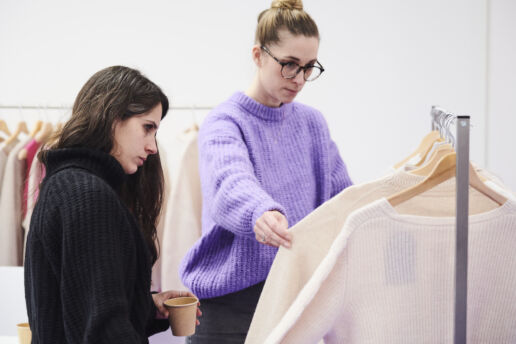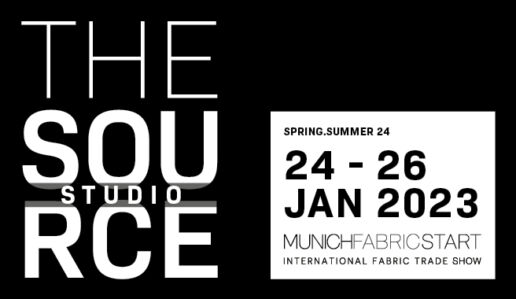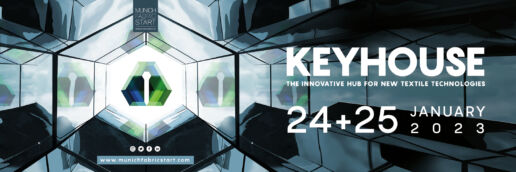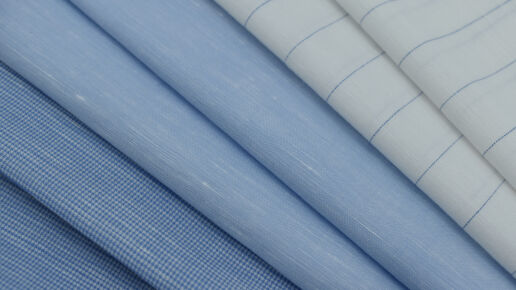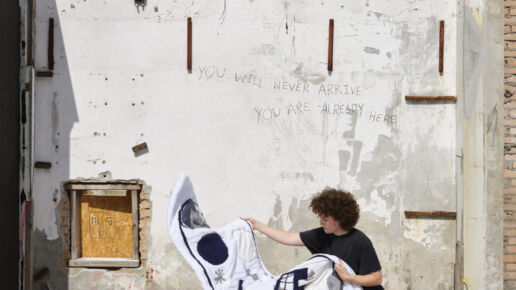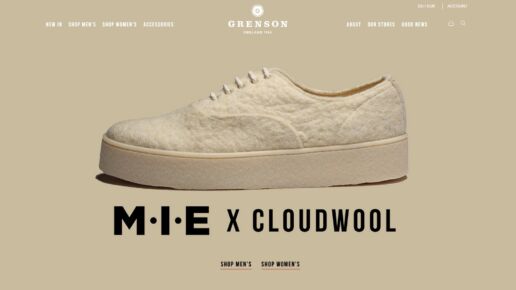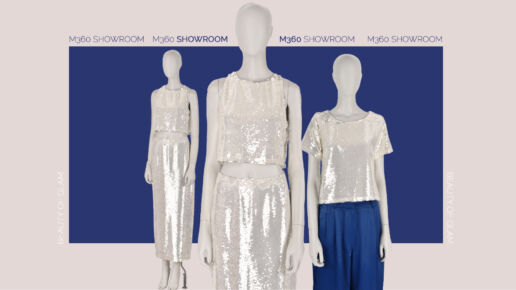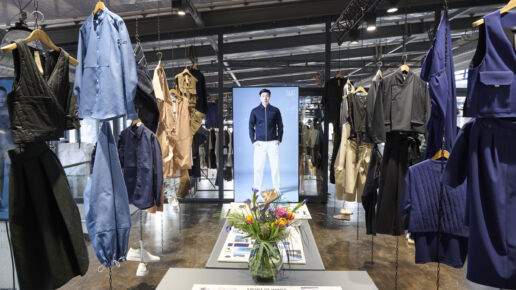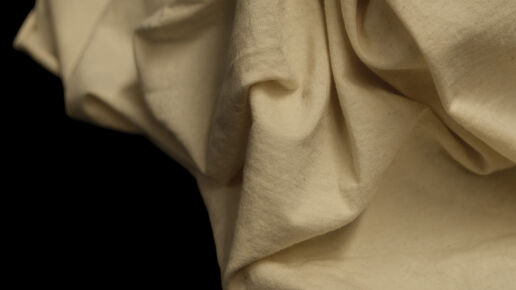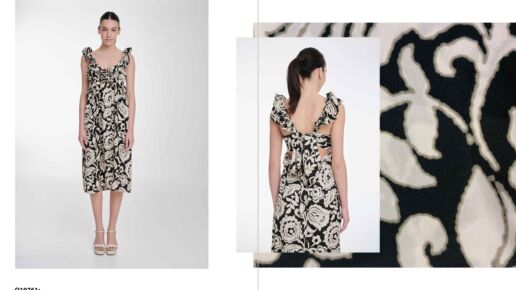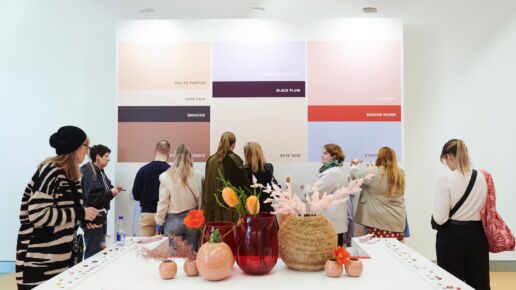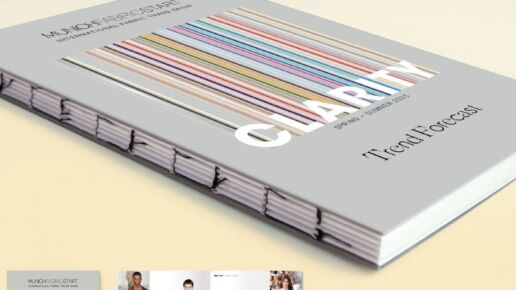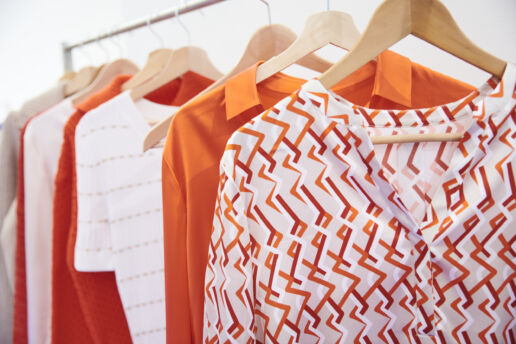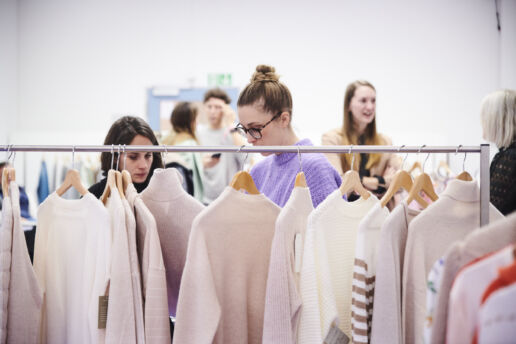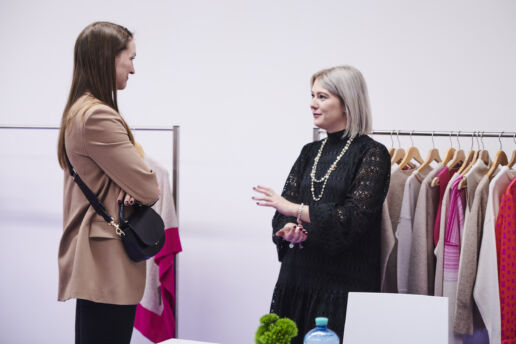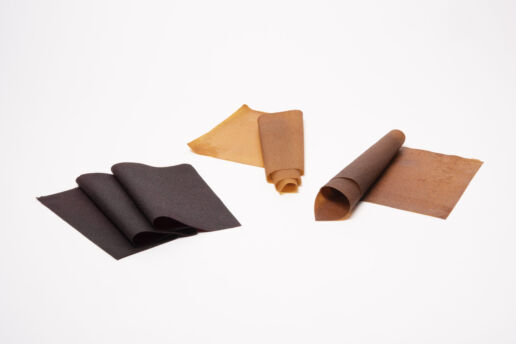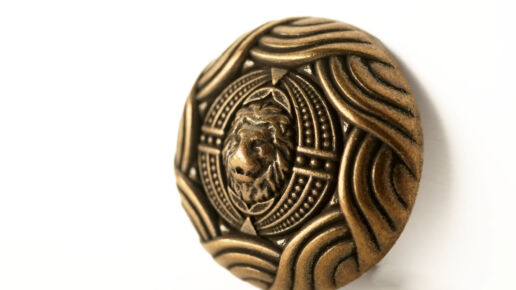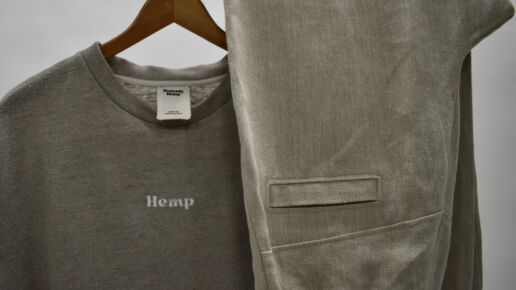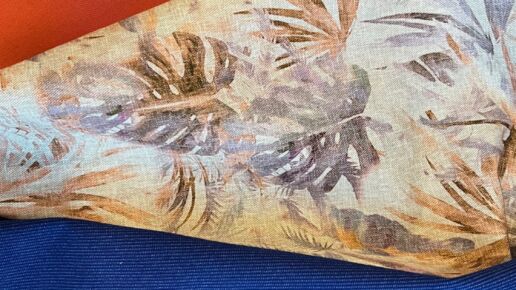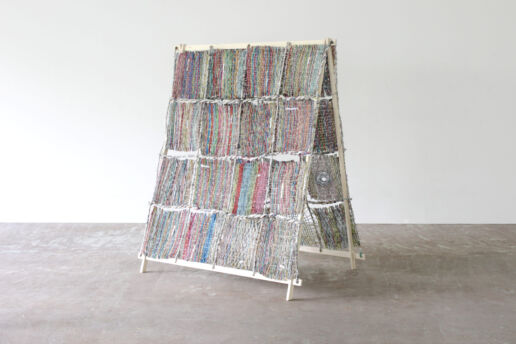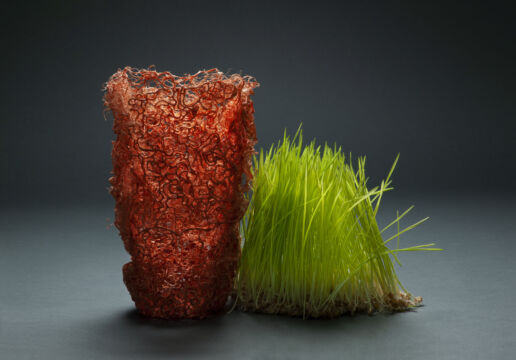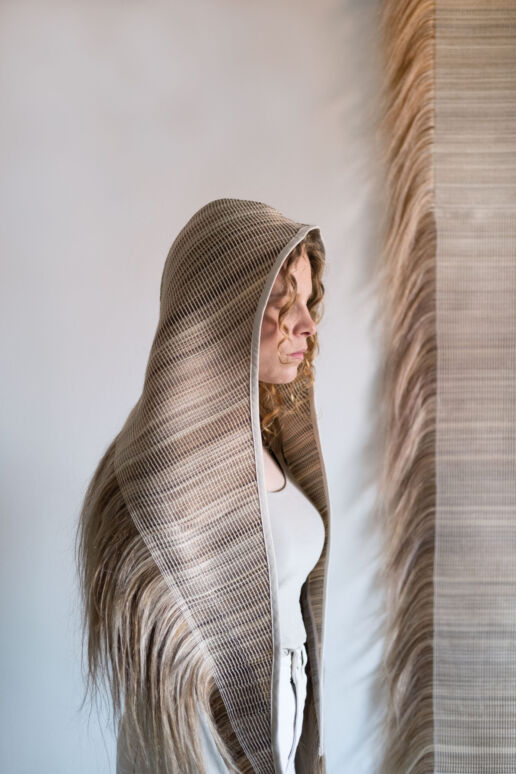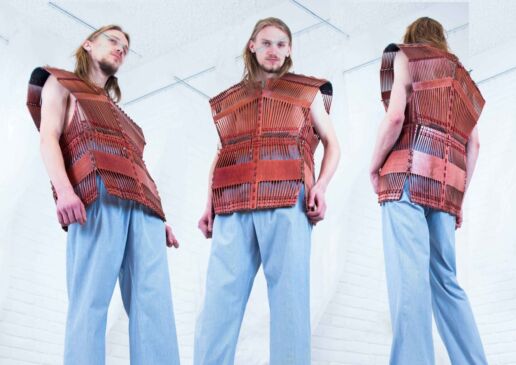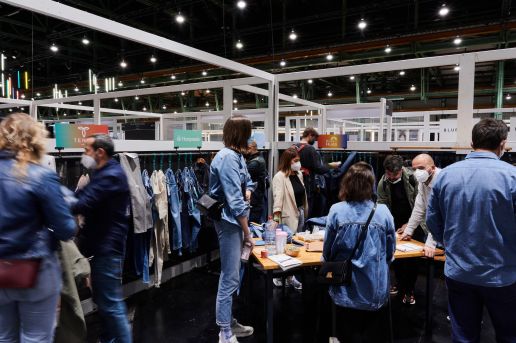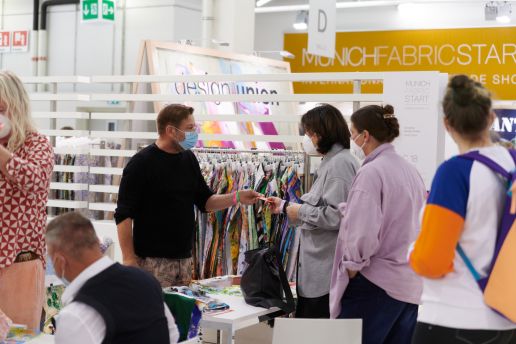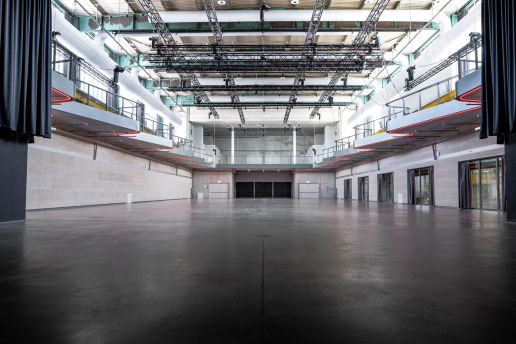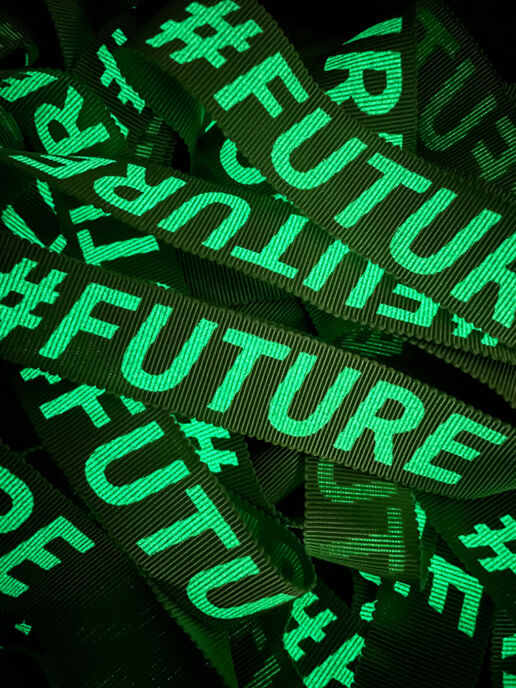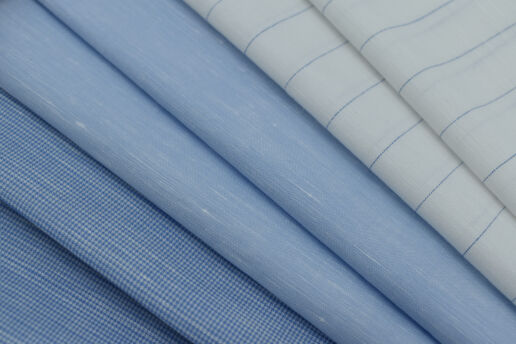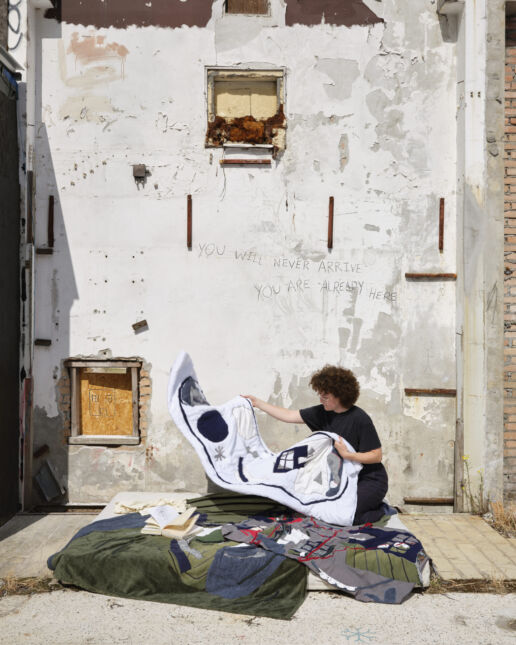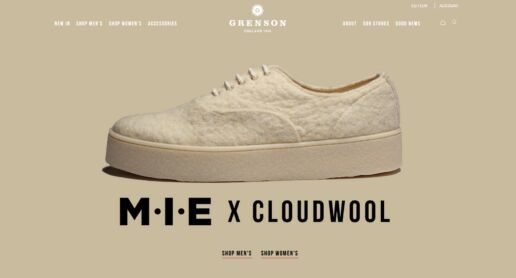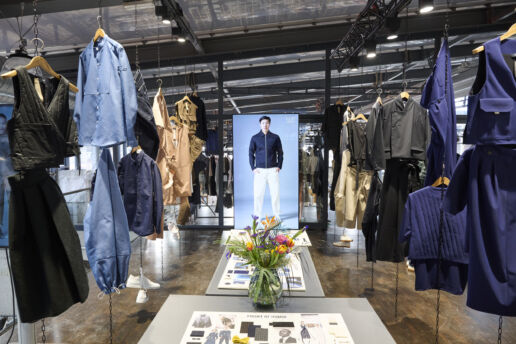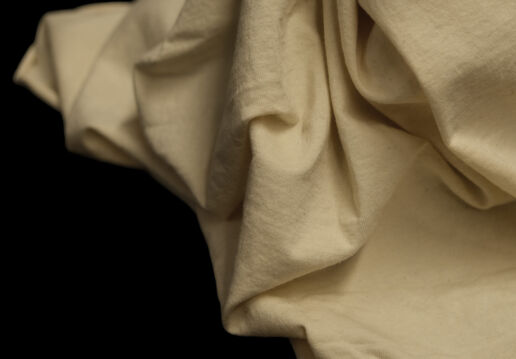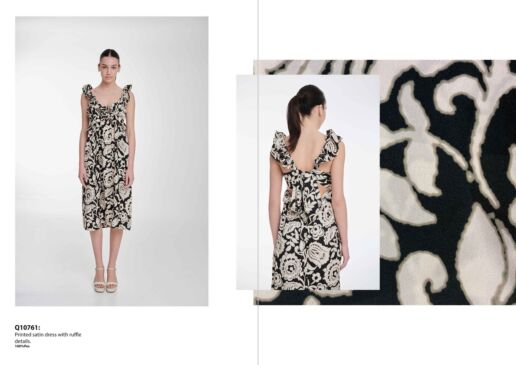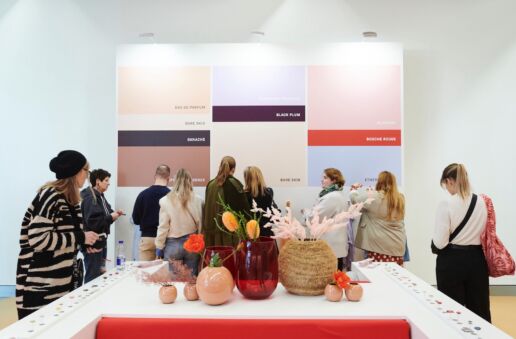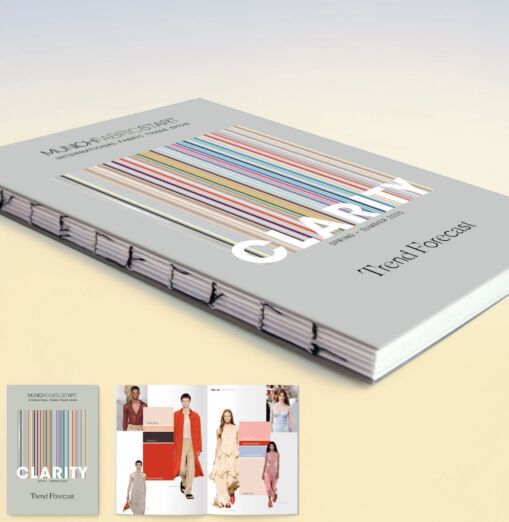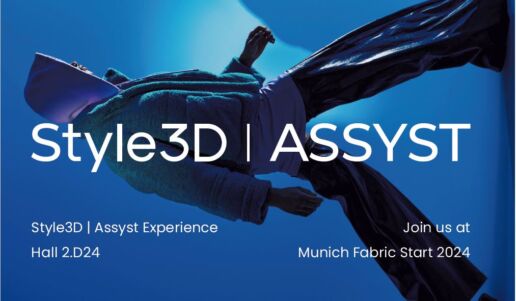Spring.Summer24
THE SOURCE 2023 - SPRING.SUMMER 24
Im Atrium 3 präsentierten fast 30 ausgewählte Bekleidungshersteller ihre Produkt- und Serviceleistungen rund um die neuesten Sourcing Services und Apparel Manufacturing. Das Leistungsspektrum der international erfahrenen Fertigungsunternehmen umfasst neben Cut-Make-Trim (CMT) Lösungen auch High End Production. Des Weiteren werden Services wie A-Z Prozesslösungen inklusive Beschaffungsabläufe geboten – die perfekte Ergänzung der Wertschöpfungskette im vielfältigen Portfolio der MUNICH FABRIC START.
Als Teil der MUNICH FABRIC START ist THE SOURCE Studio eine One-Stop-Sourcing-Plattform und Bühne für Komplettanbieter mit End-to-End-Lösungen von PLV bis White-Label für Marken, Labels und den Einzelhandel. Vertreten sind Unternehmen aus einigen der wichtigsten Beschaffungsländer wie Italien, Portugal, Griechenland oder der Türkei, die einen businessrelevanten Mix an Services präsentieren.
LAGOON LTD
LAGOON LTD bietet als Fashion Sourcing & Manufacturing Partner ein breites Segment von Knitwear, Light woven bis Outdoor Produkten an. Der Full-Service-Supplier bietet mit seinem neusten 3-D Visualisierungsprogramm den Kunden in Form eines virtuellen Portfolios die Möglichkeit, schon vor Mustererstellung ein konkretes Bild ihrer Design-Anfrage zu erstellen. Diese 3-D Visualisierung verkürzt Lieferzeiten, spart Kosten und hat einen hohen nachhaltigen Effekt. Zusammen mit dem Print-Projekt „Partner In Crime“ entwickelt Lagoon für seine Kunden exklusive Prints, die dann ebenfalls vorabauf verschiedenen Silhouetten visualisiert werden können.
OTS
OTS verfügt über ein umfangreiches Angebot an Kleidungsstücken, Stoffen, Veredelungen und Accessoires, das sie Designern und Produktverantwortlichen unserer Kunden anbieten. Das Angebot wird ständig aktualisiert und saisonal mit innovativen, aber dennoch kommerziellen Kleidungsstücken ergänzt. OTS konzentriert sich auf natürliche und recycelte Materialien und bietet die Möglichkeit, mit 100% natürlichen Farben zu färben.
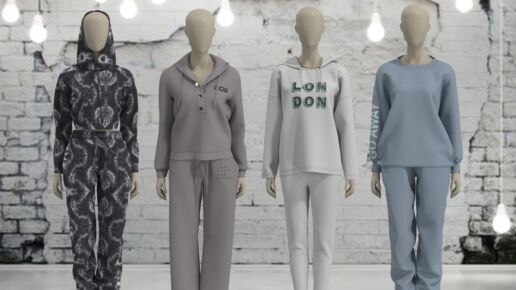
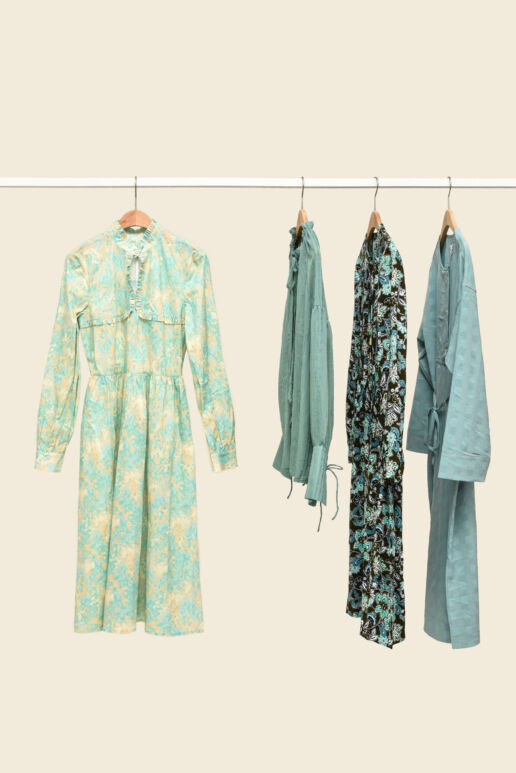
POLOPIQUÉ
Polopiqué ist eine der wenigen vollständigen vertikalen Textilindustrien weltweit, die die Produktion von der Spinnerei über das Weben/Stricken und die Veredelung bis hin zur Herstellung hochwertiger Kleidungsstücke kontrolliert. Sie bieten Strukturen wie Gewirke für Komfort, Elastizität und einen angenehmen Griff, flüssige Interlocks, extra leichte Rippen und hochwertige Trikots. Spezielle Ausrüstungen wie UV-Schutz, antibakteriell, knitterfrei, Wärmeregulierung und Hautpflege. Die SS24-Kollektion umfasst Stoffe und Knits, die unter ökologischen Gesichtspunkten entwickelt wurden, wobei recycelte und natürliche Fasern bevorzugt werden. Mischungen mit Fasern wie Bio-Baumwolle, recycelten und biologisch abbaubaren Fasern – Hanf, Leinen, Ananasfaser, Brennnessel, umweltfreundliche Viskose, Lyocell, Modal und Naia-Aceta.
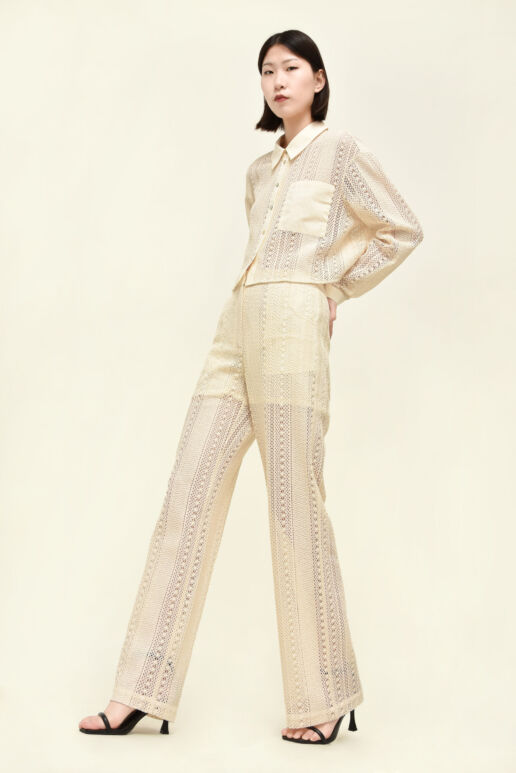
TOP TRENDS
Top Trends Lda stellt mit der neuen limitierten High Range/Luxury-Serie auf der Munich Fabric Start ein neues Produktkonzept vor, das sich durch einzigartige Muster, leuchtende Farben, Schnitte, hochwertige und nachhaltige Rohstoffe sowie eine detailgetreue Produktion mit hohen Qualitätsstandards auszeichnet. Die Linie strahlt einen Hauch Respektlosigkeit, Differenzierung, Freude und Energie aus, ohne die Essenz hoher Qualitätsstandards zu vernachlässigen. Top Trends Lda bietet Hosen, Denim, Kleider, Blusen, Jacken, T-Shirts, Jumpsuits, Shorts und vieles mehr. Die verwendeten Rohstoffe sind alle auf Qualität und Wohlbefinden ausgelegt, wobei die oberste Prämisse natürliche Rohstoffe wie Bio-Baumwolle, Tencel Lenzing, Viscose Ecovero und recycelte Produkte sind.
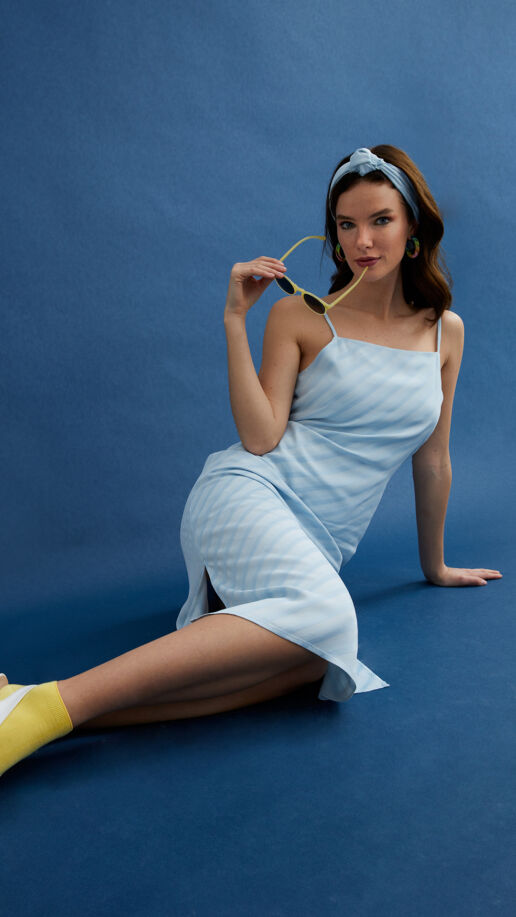
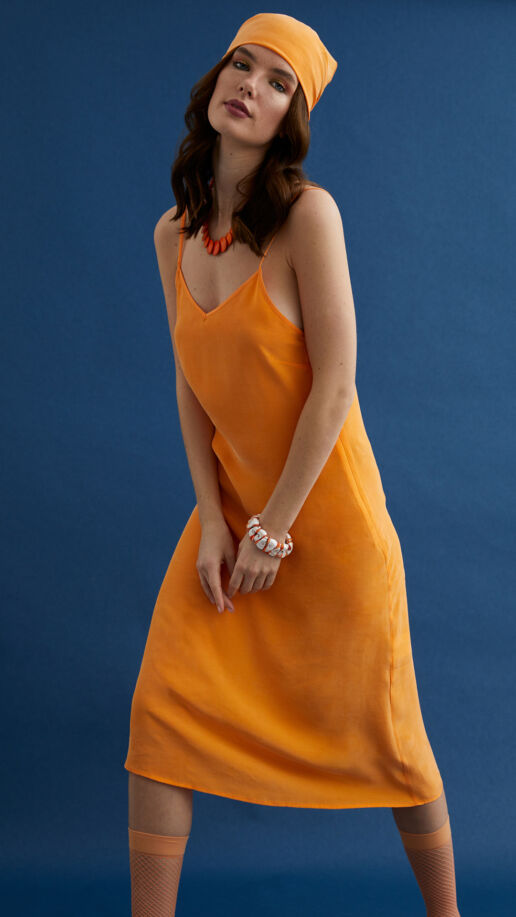
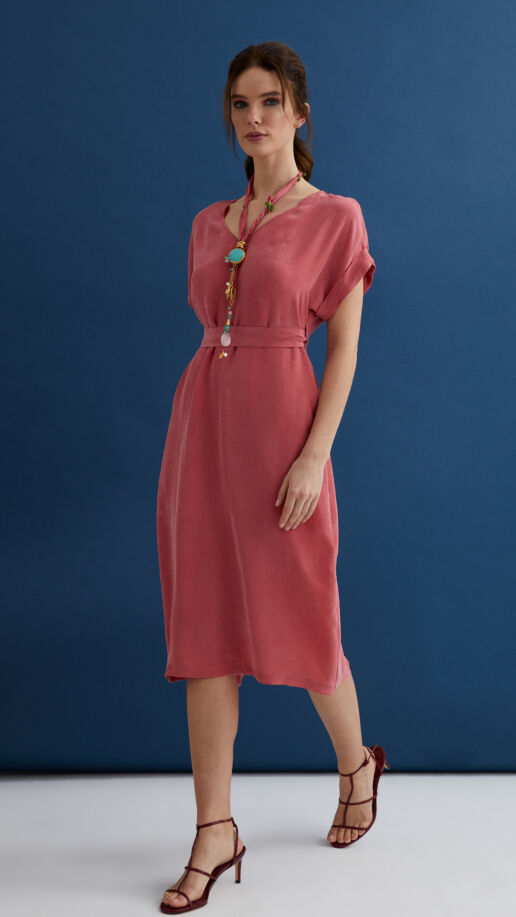
UNION 3 FASHION
Eine Kombination aus lebhaften und energiegeladenen Mustern und Grafiken in Orange-, Blau- und leuchtenden Pastelltönen schaffen eine verspielte und sommerliche Modegeschichte von UNION 3 FASHION. Die Schönheit der Natur, kombiniert mit natürlichen Farbtönen, trägt auch zu einigen zeitlosen Damenmode-Modellen bei. Die Verwendung von plissierten Stoffen mit fließenden Bewegungen, Transparenz und unsere feinen Jacquards vervollständigen die Union 3 Fashion Kollektion für die kommende Saison.
Eindrücke von THE SOURCE 2023 - SPRING SUMMER 2024
Das könnte Sie auch interessieren
The latest accessory developments for Spring.Summer 25 – Part I
22. February 2024
A big part of the collection consists of natural fibers with super light ribbons in 100% cotton, a linen braid-effect ribbon and hemp ribbons for a sustainable-oriented collection.
Fabric Trends Spring.Summer 25 – Part I
20. February 2024
It reflects the longing for positivity and offers new graphics, colours and weights. Summer is the perfect time to show character and put the shirt at the centre of the outfit. centre of the outfit.
A Life As An Art Project – Sustainable Innovations
15. February 2024
Textiles, for Sophie, become a medium that provides protection while revealing the vulnerability of the self.
CLOUDWOOL – Sustainable Innovations
13. February 2024
In a time where natural wool is often imported and blended with synthetic fibers, Cloudwool relies on local resources and fights against the neglect of local sheep farmers' wool.
THE SOURCE 2024 – Spring.Summer 25 – Part II
8. February 2024
Some 30 selected clothing manufacturers present their products and services around the latest sourcing services and apparel manufacturing at THE SOURCE studio in hall 2.
SAAT MUNICH X BLUEZONE
6. February 2024
The "SIGNATURE Corporate Collection" from SAAT - a pinnacle of elegance and sophistication
CO2 Tex – Sustainable innovations
1. February 2024
CO2Tex stands out as a central project within BIOTEXFUTURE, focusing on CO2-containing thermoplastic polyurethane (TPU) as an alternative to conventional elastane.
THE SOURCE 2024 – Spring.Summer 25 – Part I
30. January 2024
Some 30 selected clothing manufacturers present their products and services around the latest sourcing services and apparel manufacturing at THE SOURCE studio in hall 2.
MUNICH FABRIC START Januar 2024 – Closing Report
26. January 2024
The essence of the meeting of the European fashion industry: we are experiencing a return to our roots to meet the growing need for orientation – supported by a variety of exciting sustainable and AI-supported solutions that can pave the way to the future for the industry.
Trend Preview for SPRING.SUMMER 25
22. January 2024
Reduction and realism, coupled with imagination and creativity, create a new awareness of quality, sustainability and design expertise.
THE SOURCE 2023 - SPRING.SUMMER 24
Almost 30 selected clothing manufacturers present their products and services around the latest sourcing services and apparel manufacturing at THE SOURCE
studio in Atrium 3.
The range of services of the internationally experienced manufacturing companies include cut-make-trim (CMT) solutions as well as high-end production. Furthermore, services such as A-Z process solutions including procurement processes are offered – a suitable addition to the diverse portfolio of MUNICH FABRIC START.
As part of the MUNICH FABRIC START, THE SOURCE studio is a one-stop sourcing platform and the stage to all-in-one providers to present turnkey, end-to-end solutions from PLV to white-label for brands, labels and retail. Companies from some of the most important manufacturing countries such as Italy, Portugal, Greece or Turkey will be on site to present a business-relevant mix of services.
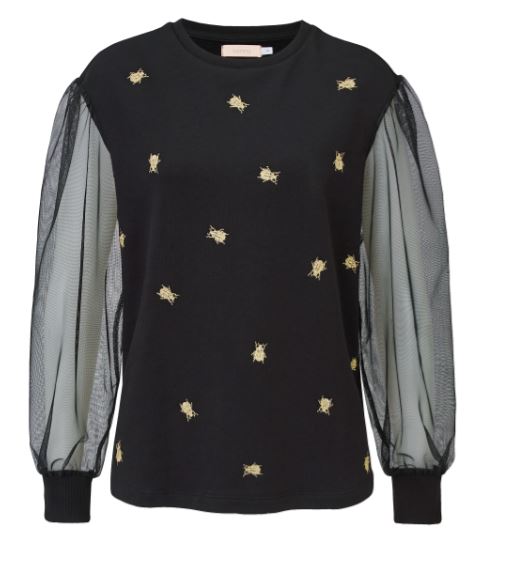
BETA
Beta is a knitwear manufacturer with in-house facilities like printing, embroidery, pattern making, design, cutting, sampling. With additional garment dye & garment wash house, they offer different varieties to their customers and want them to have a full experience. Beta is taking place in sustainability movement and with different certificates in hand, they do provide different production processes.
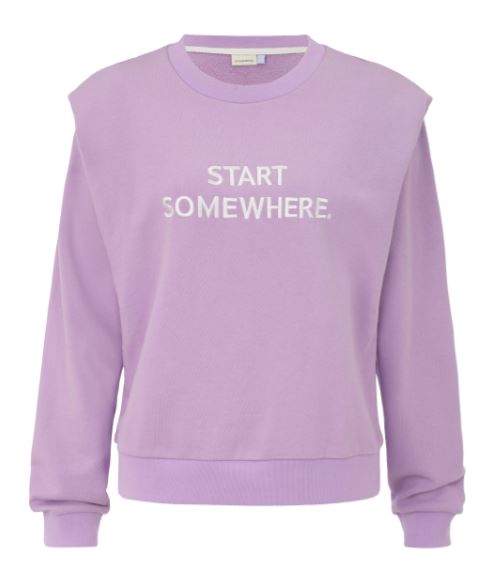
BLOK MODA
Blok Moda is one of the leading apparel manufacturers and exporters, specialized in knitwear with more than 26 years of experience in the clothing industry. They provide flexible, time and cost-effective solutions with 3D technical drawings, designs, sewing and virtual fittings on human based avatars. They can easily create fabrics with all color options and place your samples in your personalized avatars based on your brand identity. Direct service and communication is provided at any stage from collection and sampling to follow-up of manufacturing preparation, quality control and shipment.


EAST
EAST is a Danish design driven private label production company. EAST was founded in 2009 and has experienced a successful growth over the last years. Today we work with the best brands all over Europe. Our Design department creates a collection with around 60-80 styles every week divided into 5 capsule collections. You can find our showrooms in Germany, Denmark and Spain. Explore our new creations at our booth.

KREATEKS
The fully sustainable garment producer Kreateks was founded in 2005 and offers light woven and any kind of jersey garments for European Brands. They own certificates from GOTS, RCS, GRS, OCS and in Social Compliance part and are also certificated with both BSCI and SEDEX. Find shirts, blouses, tops, dresses, skirts, pants, jackets in light woven fabrics and mesh, lace, jacquard fabrics as well as garments with printed bases. Available materials are viscose, cotton, modal, lyocell, re-cycled polyester, wool fabrics, cupro, silk, Lenzing and ecovero.



IMPRESSIONS OF THE SOURCE 2023 - SPRING SUMMER 2024
THIS MIGHT BE ALSO INTERESTING FOR YOU
The latest accessory developments for Spring.Summer 25 – Part I
22. February 2024
A big part of the collection consists of natural fibers with super light ribbons in 100% cotton, a linen braid-effect ribbon and hemp ribbons for a sustainable-oriented collection.
Fabric Trends Spring.Summer 25 – Part I
20. February 2024
It reflects the longing for positivity and offers new graphics, colours and weights. Summer is the perfect time to show character and put the shirt at the centre of the outfit. centre of the outfit.
A Life As An Art Project – Sustainable Innovations
15. February 2024
Textiles, for Sophie, become a medium that provides protection while revealing the vulnerability of the self.
CLOUDWOOL – Sustainable Innovations
13. February 2024
In a time where natural wool is often imported and blended with synthetic fibers, Cloudwool relies on local resources and fights against the neglect of local sheep farmers' wool.
THE SOURCE 2024 – Spring.Summer 25 – Part II
8. February 2024
Some 30 selected clothing manufacturers present their products and services around the latest sourcing services and apparel manufacturing at THE SOURCE studio in hall 2.
SAAT MUNICH X BLUEZONE
6. February 2024
The "SIGNATURE Corporate Collection" from SAAT - a pinnacle of elegance and sophistication
CO2 Tex – Sustainable innovations
1. February 2024
CO2Tex stands out as a central project within BIOTEXFUTURE, focusing on CO2-containing thermoplastic polyurethane (TPU) as an alternative to conventional elastane.
THE SOURCE 2024 – Spring.Summer 25 – Part I
30. January 2024
Some 30 selected clothing manufacturers present their products and services around the latest sourcing services and apparel manufacturing at THE SOURCE studio in hall 2.
MUNICH FABRIC START Januar 2024 – Closing Report
26. January 2024
The essence of the meeting of the European fashion industry: we are experiencing a return to our roots to meet the growing need for orientation – supported by a variety of exciting sustainable and AI-supported solutions that can pave the way to the future for the industry.
Trend Preview for SPRING.SUMMER 25
22. January 2024
Reduction and realism, coupled with imagination and creativity, create a new awareness of quality, sustainability and design expertise.
Let's get circular - Sustainable innovations
Using existing resources and creating something new from them: What if you didn’t dispose of the leftovers of freshly squeezed juice – but could create a new material from it? Germany is at the forefront of apple juice consumption, producing up to 200,000 tonnes of pomace per year, solid residues from the pressing process. Instead of reusing them, as has been the case up to now, mainly in biogas plants, for pectin extraction or as animal feed, textile and surface designer Verena Brom has been inspired to develop new material systems for various industries.
The designer studied at the Weißensee Art Academy in Berlin. In the project “A Matter of Fruit“, she produces various biodegradable films from pomace residues that can be used instead of synthetic material. Visually and characteristically, it can be classified as a paper, plastic or leather alternative, depending on its thickness, and offers potential for different areas of application – from interior design to the clothing industry. The material is suitable for laser cutting and engraving, but due to its fusibility it can also be welded or pressed into shape. In addition to the films, Verena Brom has developed a printing paste made from apple pomace that further expands the material’s design possibilities and areas of application.
After the first cycle of use, the material can be returned to the natural loop: For example, it can be turned into a plant pot that biologically decomposes after being potted into the soil. This brings Verena Brohm closer to her goal of using renewable resources – such as the by-products of the food industry – and to use design as a tool to optimise material cycles.
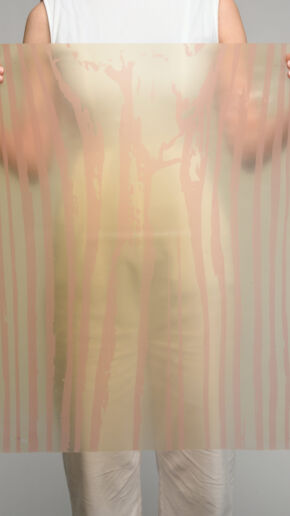
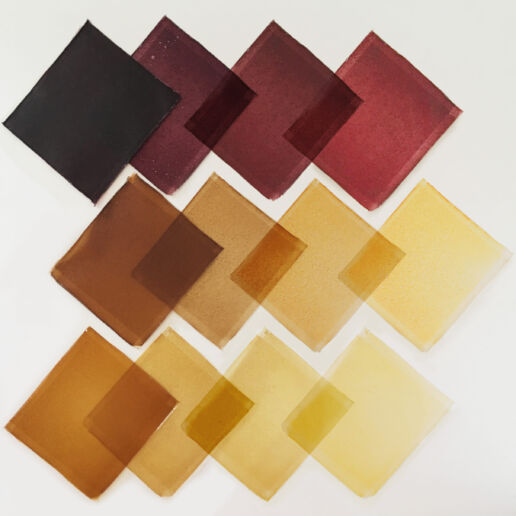
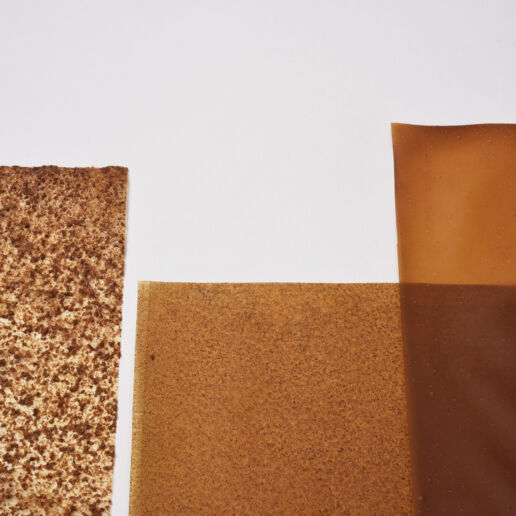
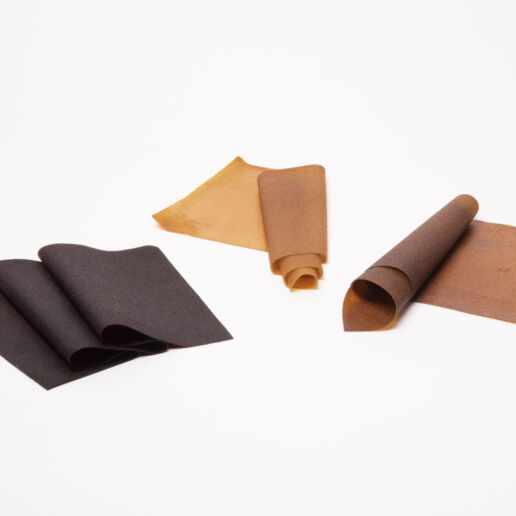
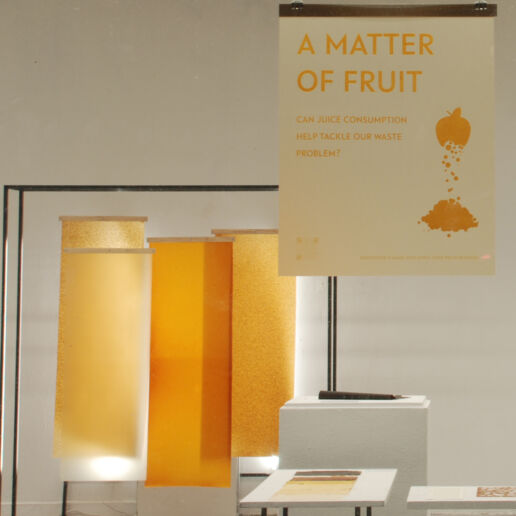
“When developing the material, it was important to use as few additives as possible – and to push boundaries:
how can different properties be developed solely through different processing methods? Using different techniques can expand the
scope for design and influences the haptic and translucency of the material:
from smooth to abrasive, from transparent to opaque – a big variety of options are possible without loosing the mono-materiality.“
———————————————————————–
THIS MIGHT BE ALSO INTERESTING FOR YOU:
The latest accessory developments for Spring.Summer 25 – Part III
16. April 2024
With new recycled materials and innovative dyeing techniques, they create environmentally friendly designs. Organic polyester gives additional sustainability, while customised designs emphasise personal style.
Honestly Hemp – Sustainable Innovations
11. April 2024
Her vision: to create an entire outfit made wholly from hemp fibre and end the stigma surrounding the plant.
Fabric Trends Spring.Summer 25 – Part V
9. April 2024
At the heart of this collection is Q-Cycle by Fulgar™, a revolutionary approach that incorporates end-of-life tires into the mass balance technology used during its production, minimizing waste and giving a new life to materials that would contribute to environmental challenges.
Collective braiding - Sustainable innovations
A world where everything is becoming faster, more connected and more digital, endless possibilities are emerging. But why always strive for the new instead of continuing the traditional?
Designer Camille Champion has taken note of this development and, during a stay in South Korea, set out to revive interest in traditional craftsmanship.
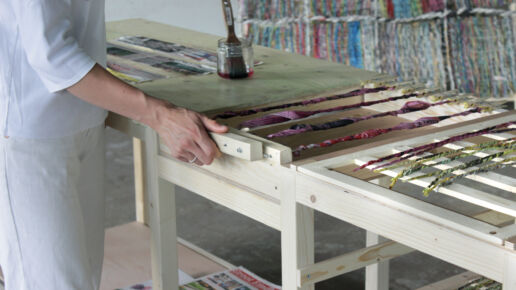
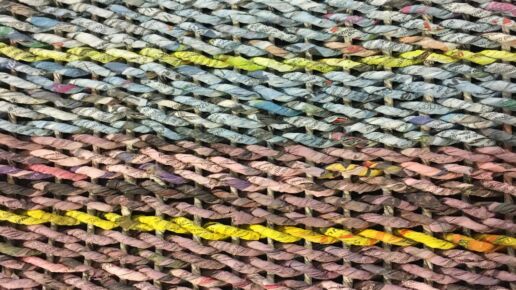
During her travels, she discovered the over 500-year-old technique of jiseung – a process dating back to the Joseon Dynasty that is used to make basketry from old books and paper waste. To do this, the paper is cut into thin strips and then corded. The cords can then be woven into containers such as baskets in various colours and patterns using different basketry techniques.
To save this cultural heritage from extinction, Camille Champion has launched the “Twist and Roll” project, bringing the reuse of newspaper waste to create new objects into a modern Western context: to pass on the craft, the designer has set up a series of workshops to give school children a connection to this tradition. She has designed a small weaving tutorial to teach children to make their own paper threads, weave them on a loom and then collectively build a tent-like structure for their classroom. Twist and Roll combines sustainability, creativity, craft skills and teamwork to show how the education system can benefit from crafts.
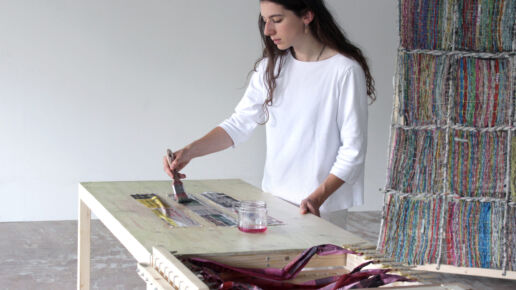
“In my opinion, giving the right tools to the new generations is very important.
Teaching them about materiality, history, or sustainability, will allow them to make the right choices for a better future.”
———————————————————————–
THIS MIGTH BE ALSO INTERESTING FOR YOU
The latest accessory developments for Spring.Summer 25 – Part III
16. April 2024
With new recycled materials and innovative dyeing techniques, they create environmentally friendly designs. Organic polyester gives additional sustainability, while customised designs emphasise personal style.
Honestly Hemp – Sustainable Innovations
11. April 2024
Her vision: to create an entire outfit made wholly from hemp fibre and end the stigma surrounding the plant.
Fabric Trends Spring.Summer 25 – Part V
9. April 2024
At the heart of this collection is Q-Cycle by Fulgar™, a revolutionary approach that incorporates end-of-life tires into the mass balance technology used during its production, minimizing waste and giving a new life to materials that would contribute to environmental challenges.
Clothes that grow - Sustainable innovations
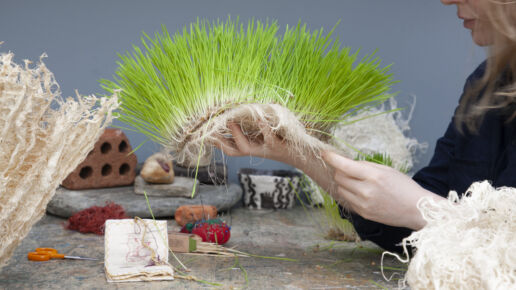
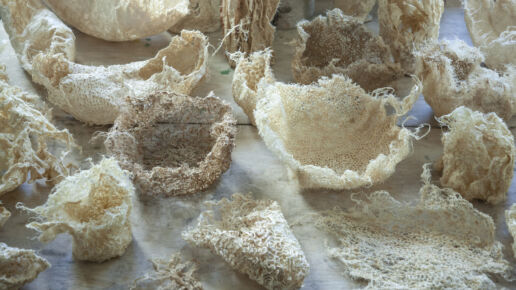
Nature as a 3D printer: material designer and underwater photographer Zena Holloway creates shapes and forms from wheat grass roots that grow in self-carved moulds made of beeswax. The supposed magic lasts for twelve days – the roots spread out horizontally or vertically and make their individual way through the wax templates. Depending on the shape of these, the roots either grow small in a confined space so that they become flat and compact, or if there is more space they can root deeper and three-dimensional shapes emerge. Immediately after harvesting, the roots are heavy and moist, after 24 hours they dry out and become light as a feather.
Each growth cycle produces a different result – all products are therefore individual pieces that can be further shaped by cutting, sewing, tearing or linking. For example, they can be used to create large, hanging structures, to shape vessels or to produce clothing and accessories. The wheatgrass roots also react particularly well to natural dyeing processes. In the name of sustainability: the water that accumulates and runs off during production can be reused and the leftover shoots, seeds or roots can be reused as animal feed. In addition, the dried root is a kind of botanical skeleton that binds carbon. Thus, the Rootful project demonstrates a micro-level approach to solving the complex problem of climate change.
“Growing artefacts from root is the simplest concept but captures the imagination of a wide audience.
I’m learning that root is a wonderful material to create fashion and art, serving to open up conversations around materiality and sustainability that inspire change.“
In the name of sustainability: the water that accumulates and runs off during production can be reused and the leftover shoots, seeds or roots can be reused as animal feed. In addition, the dried root is a kind of botanical skeleton that binds carbon.
Thus, the Rootful project demonstrates a micro-level approach to solving the complex problem of climate change.
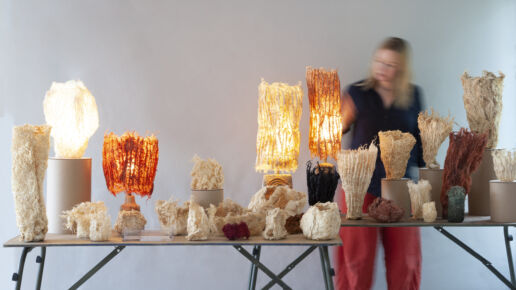
———————————————————————–
THAT MIGHT BE ALSO INTERESTING FOR YOU
The latest accessory developments for Spring.Summer 25 – Part III
16. April 2024
With new recycled materials and innovative dyeing techniques, they create environmentally friendly designs. Organic polyester gives additional sustainability, while customised designs emphasise personal style.
Honestly Hemp – Sustainable Innovations
11. April 2024
Her vision: to create an entire outfit made wholly from hemp fibre and end the stigma surrounding the plant.
Fabric Trends Spring.Summer 25 – Part V
9. April 2024
At the heart of this collection is Q-Cycle by Fulgar™, a revolutionary approach that incorporates end-of-life tires into the mass balance technology used during its production, minimizing waste and giving a new life to materials that would contribute to environmental challenges.
Hairy affair - Sustainable Innovation
Hair creates identity – we dye it, style it, create new looks and expressions, and associate ourselves with cultural or social groups. It loses meaning and becomes rubbish to be discarded. In her hair project, Savine School gives hair a second life.
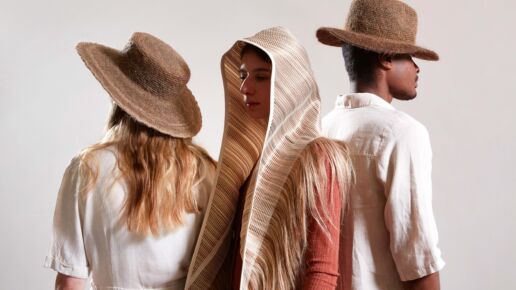
“Haar Haar focuses on the short switch from appreciating hair to feeling disgusted by it, even when it is the same material. It seeks to give a second life
to the material we treasured when it was on our head.“
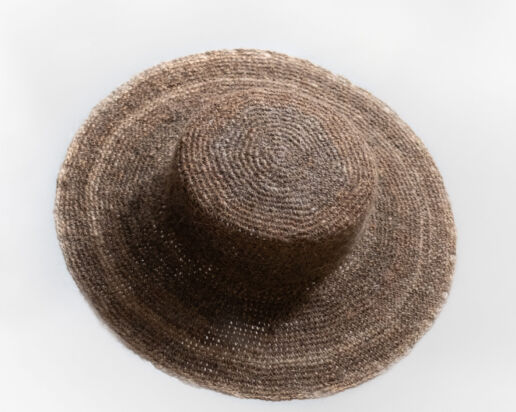
Every month, the textile designer and material researcher collects kilos of hair from various hair salons and extension studios and sorts them by colour and length. In the next step, she uses a machine to spin the hair together with wool into a uniform, flexible yarn. This yarn highlights the properties of both materials: the admixed wool offers the possibility to work with other tones beyond the hair colours, while the reflection of light on the hair provides a beautiful shimmer.
The designer uses the yarn to produce stylish accessories, such as crocheted hats – which at first glance have nothing to do with what ends up on the floor during a visit to the hairdresser. In this way, Savine Schoorl makes it clear that hair is a valuable resource and gives people the opportunity to discover the value of supposed waste in its second life cycle.
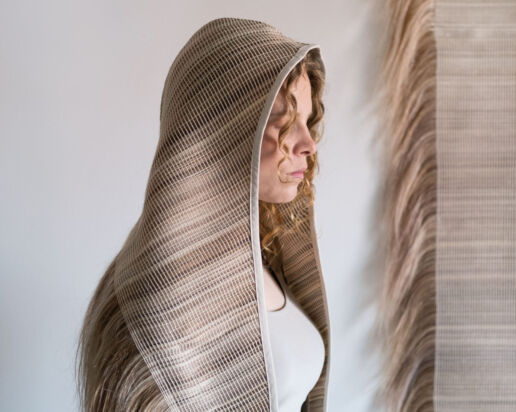
———————————————————————–
THIS MIGHT BE ALSO INTERESTING FOR YOU:
The latest accessory developments for Spring.Summer 25 – Part III
16. April 2024
With new recycled materials and innovative dyeing techniques, they create environmentally friendly designs. Organic polyester gives additional sustainability, while customised designs emphasise personal style.
Honestly Hemp – Sustainable Innovations
11. April 2024
Her vision: to create an entire outfit made wholly from hemp fibre and end the stigma surrounding the plant.
Fabric Trends Spring.Summer 25 – Part V
9. April 2024
At the heart of this collection is Q-Cycle by Fulgar™, a revolutionary approach that incorporates end-of-life tires into the mass balance technology used during its production, minimizing waste and giving a new life to materials that would contribute to environmental challenges.
A Suit of Armour - Sustainable innovations
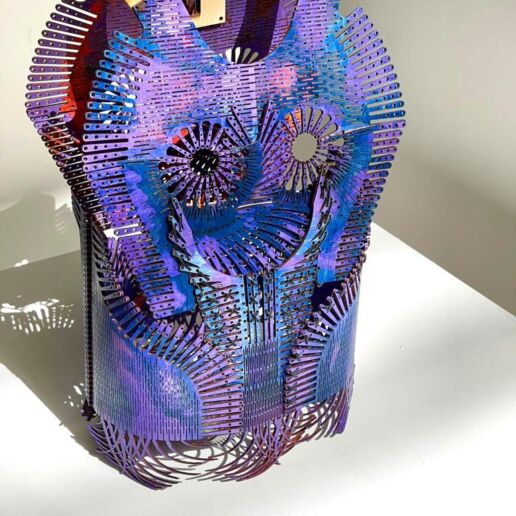
The name says it all: “Choub” means “wood” in Farsi – the material that designer Mehdi Mashayekhi draws on in his project Choub and uses innovative methods to create something new: Using digital fabrication, he has designed an abstract clothing collection for which he deconstructs the wood, giving the material new physical properties such as flexibility and stretchability.
The designer resorts to two methods: with topology optimisation, a computer-based process, he uses algorithmic models to determine the optimal shape of components in terms of load limits. The generative design method also creates new, powerful design options with the help of artificial intelligence. In this way, Mehdi Mashayekhi succeeds in solving complex requirements, distributing the weight of components and reducing manufacturing costs.
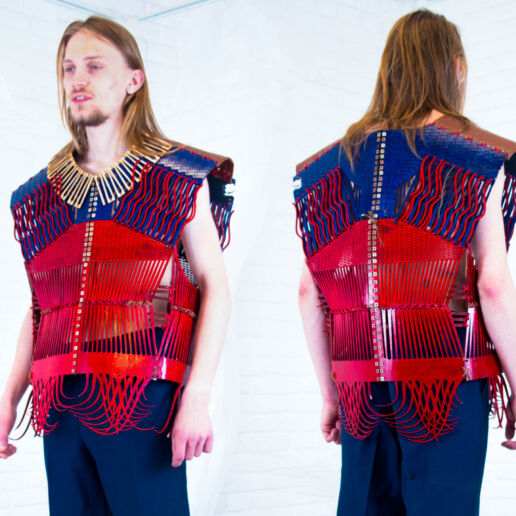
“Design is a glowing point in the cross-point between art and science, where reality meets vision.”
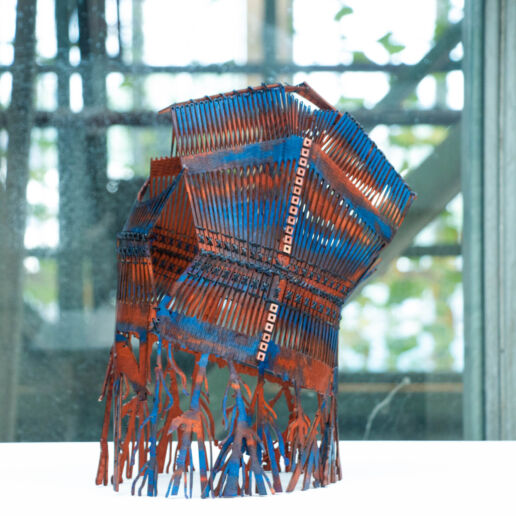
Innovative, unconventional, visionary: In the Choub project, 6mm thick plywood is used to create armour-like, portable constructions in which the wood loses its hardness and becomes flexible. Win-win: The designer optimises the use of materials in the design and at the same time provides a solution for upcycling waste. With the use of digital manufacturing, Mehdi Mashayekhi is helping to drive circularity and strengthen openness to materials and technical textiles.
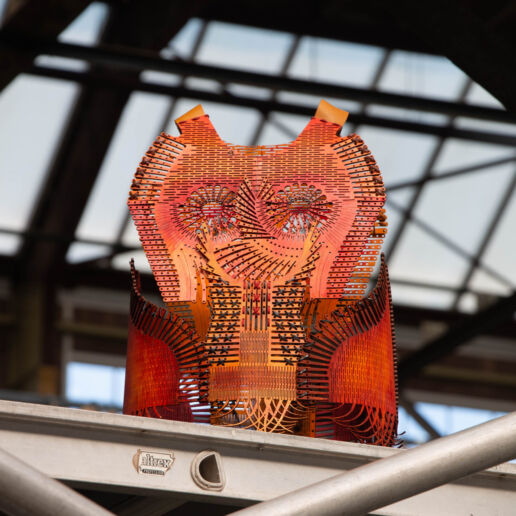
———————————————————————–
THIS MIGHT BE ALSO INTERESTING FOR YOU
The latest accessory developments for Spring.Summer 25 – Part III
16. April 2024
With new recycled materials and innovative dyeing techniques, they create environmentally friendly designs. Organic polyester gives additional sustainability, while customised designs emphasise personal style.
Honestly Hemp – Sustainable Innovations
11. April 2024
Her vision: to create an entire outfit made wholly from hemp fibre and end the stigma surrounding the plant.
Fabric Trends Spring.Summer 25 – Part V
9. April 2024
At the heart of this collection is Q-Cycle by Fulgar™, a revolutionary approach that incorporates end-of-life tires into the mass balance technology used during its production, minimizing waste and giving a new life to materials that would contribute to environmental challenges.
A Vibe Shift is coming
Often, fashion trends are merely new variations on already familiar themes over many seasons. But then at some point there is suddenly a fundamental break, a completely new attitude to life, a completely different basic mood, a “vibe shift”. We are now at such a turning point.
The measures necessary to contain Covid 19 have been so all-encompassing that they have actually robbed us of all joy in life in the meantime. Many of us are left with the feeling that we have lost two years of our lives. This is felt particularly intensely by young people who were irretrievably robbed of part of their precious youth by the pandemic.
Greta Thunberg speaks for her entire generation when she says in retrospect: “We have become more aware that life is short.” The realisation that our time on earth is running out far too quickly is anything but new, but it is particularly topical for us now.
Fashion psychology professor Carolyn Mair also observed during the pandemic how consumers “realise that life is precious, whereas before they might have taken things for granted. They are seizing the moment.”
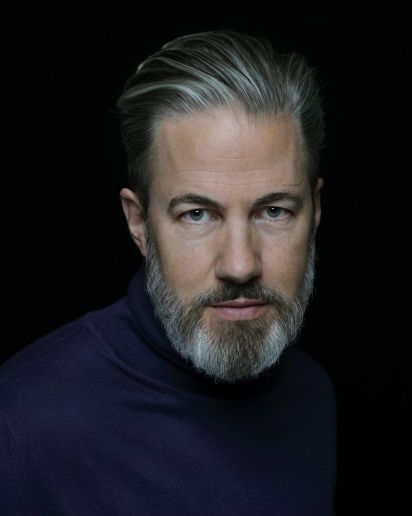
Carl Tillessen
As the 20s take shape, it becomes clear that the Lifestyle of Health and Sustainability, which has dominated the Zeitgeist for the past two decades, has reached its end. Because the L.O.H.A.S. is the opposite of the moment. It is the eternal later. If we chastise ourselves now – so he promises – we will have a healthy body and a healthy environment later. This is and remains true, but through the collective pandemic experience, the fear that we will neglect to enjoy today because of all the thinking about tomorrow has become overwhelming. We crave self-indulgence, need outlets, want to break out, go overboard, want to live as if there is no tomorrow …
GET INFORMED & INSPIRED AT MUNICH FABRIC START AT DMI:
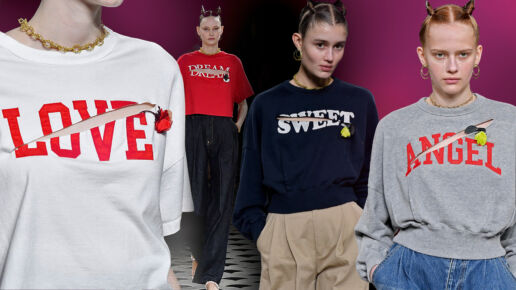
Find out what this means for fashion and what follows the Lifestyle Of Health And Sustainability at MUNICH FABRIC START at the trend presentation of DMI S/S 24
Wednesday, 25 January, at 4:00pm
in Room K1 in front of Hall 1 at MOC.
Discover more industry-changing innovations at our upcoming trade shows:
Textile Innovations: Ready To Be Supercharged in 2023?
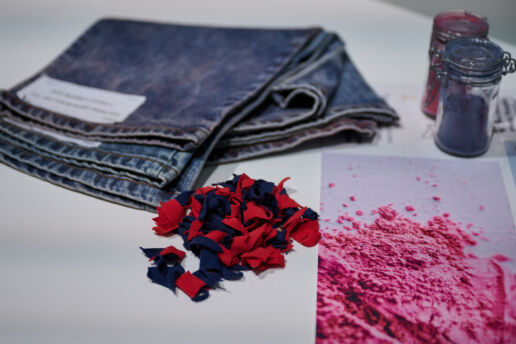
When it comes to textiles, one of the biggest challenges has been the industry taking on the responsibility to examine its processes. Although a necessary step, it is not an easy one for an industry built on foundations that date back to the mid-1700s industrial revolution. The good news is that with the help of new technology, the textiles industry is beginning to become better equipped to address most of the pain points in its supply chain, and in 2023 we may actually witness more innovations than ever being accelerated and scaled.
What To Expect in 2023
In the last few years, a shift in values has been redefining the textile industry. It is a shift driven by various technological solutions created to transform the global textile industry, so businesses can reach their sustainability and circularity goals and also understand the role that policy will most likely play in pushing value-driven fabrics forward.
So with innovation as its backbone, what can industry players seeking a more constructive view of the textile market expect in 2023?
Well, here is an overview of what is expected from the textiles space in 2023:
- There will be an acceleration and scaling of textile technologies that will position companies, small and midsize players, to explore further innovations that will help them align their business so they can adapt their practices and commit long-term.
- New fabrics will no longer survive but thrive as more research into sustainable materials and technologies increases and more brands continue to invest in sustainable and safer innovations.
- The textile industry in 2023 is expected to focus less on decadence and more on authenticity.
- We will witness the adoption of new business models that support sustainability initiatives — including supply chain traceability and the reduction of material usage.
- One of the growth drivers of the global textile market will be increasing demand for environmentally friendly and readily available natural fibres. In addition, more performance and technical fabrics will lean towards natural fibres.
- In 2023, more governments will start imposing stringent regulations. As a result, there will be more pressure on textile manufacturers to be less scattered and unorganised, especially when using toxic dyeing chemicals.
- The landscape will see an increase in market players whose USPs will be strongly driven by new technology and innovations. With a competitive edge, these material innovators bring new growth opportunities and strategies to the market.
- The textiles industry will continue to face materials, manufacturing and sustainability challenges in 2023. However, the good news is that the solutions that will continue to be explored in 2023 will be of a collaborative kind.
- Regarding future proofing manufacturing, 2023 strategies will push forward new research around new materials, digital manufacturing and sustainability for future textiles. In addition, textile manufacturers will create new supply chain models based on vertical integration, nearshoring, and small-batch production.
- In 2023, expect speed and agility to effectively tackle the challenges that slow down the growth of the textile and garment industry.
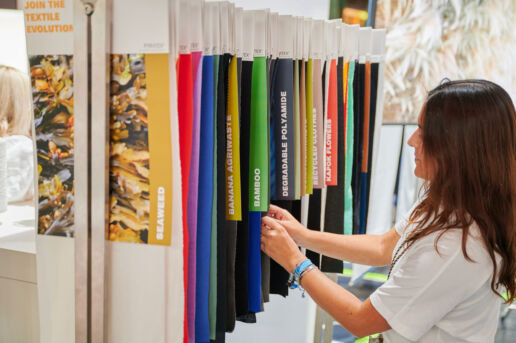
If you take away one thing, let it be this:
don’t be scared by the threat of new textile legislation distracted by the predicted digital shakedown or exhausted by the growing customer demands for sustainability.
Instead, ask yourself, if the future is promised to those who can ride through the challenges by embracing technology across their supply chain, can I afford to shy away from strategically sharpening my approach to the innovative dynamics driving the textile industry in 2023?
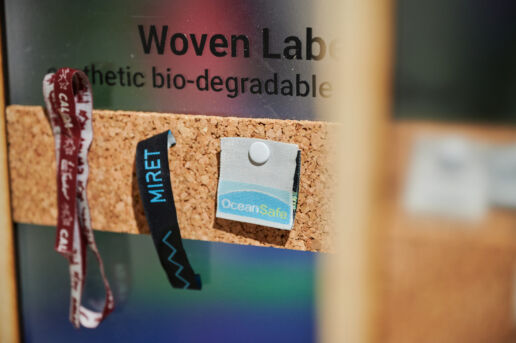
Are you interested in more in-depth facts and figures on the new textile economy?
Visit the Shape Innovate Lounge in H5 | 04 or attend the mini-lectures in the Keyhouse.
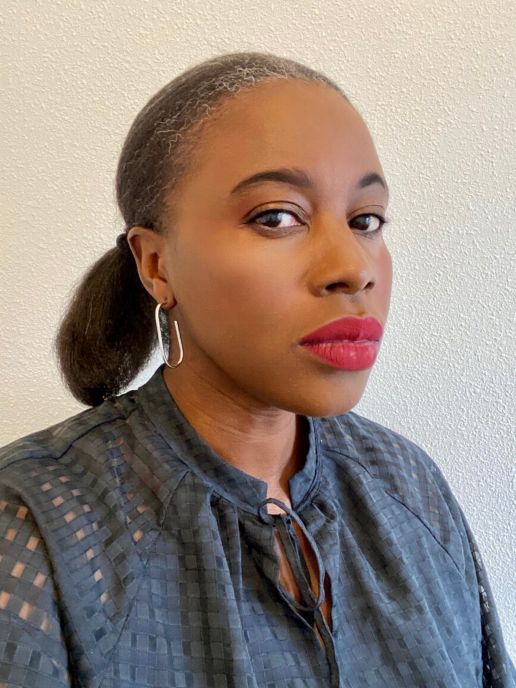
About the author
Founding editor-in-chief of Shape Innovate, Muchaneta has worked in the fashion industry for over 14 years. She is currently one of the leading influencers speaking and writing about the merger of fashion with technology and wearable technology.
Muchaneta ten Napel | m@shapeinnovate.com
This might be also interesting for you
The latest accessory developments for Spring.Summer 25 – Part I
22. February 2024
A big part of the collection consists of natural fibers with super light ribbons in 100% cotton, a linen braid-effect ribbon and hemp ribbons for a sustainable-oriented collection.
Fabric Trends Spring.Summer 25 – Part I
20. February 2024
It reflects the longing for positivity and offers new graphics, colours and weights. Summer is the perfect time to show character and put the shirt at the centre of the outfit. centre of the outfit.
A Life As An Art Project – Sustainable Innovations
15. February 2024
Textiles, for Sophie, become a medium that provides protection while revealing the vulnerability of the self.
CLOUDWOOL – Sustainable Innovations
13. February 2024
In a time where natural wool is often imported and blended with synthetic fibers, Cloudwool relies on local resources and fights against the neglect of local sheep farmers' wool.
THE SOURCE 2024 – Spring.Summer 25 – Part II
8. February 2024
Some 30 selected clothing manufacturers present their products and services around the latest sourcing services and apparel manufacturing at THE SOURCE studio in hall 2.
SAAT MUNICH X BLUEZONE
6. February 2024
The "SIGNATURE Corporate Collection" from SAAT - a pinnacle of elegance and sophistication
CO2 Tex – Sustainable innovations
1. February 2024
CO2Tex stands out as a central project within BIOTEXFUTURE, focusing on CO2-containing thermoplastic polyurethane (TPU) as an alternative to conventional elastane.
THE SOURCE 2024 – Spring.Summer 25 – Part I
30. January 2024
Some 30 selected clothing manufacturers present their products and services around the latest sourcing services and apparel manufacturing at THE SOURCE studio in hall 2.
MUNICH FABRIC START Januar 2024 – Closing Report
26. January 2024
The essence of the meeting of the European fashion industry: we are experiencing a return to our roots to meet the growing need for orientation – supported by a variety of exciting sustainable and AI-supported solutions that can pave the way to the future for the industry.
Trend Preview for SPRING.SUMMER 25
22. January 2024
Reduction and realism, coupled with imagination and creativity, create a new awareness of quality, sustainability and design expertise.
Meet Saitex - the vertical Vietnamese Denim Entity
Global jeans manufacturer Saitex is going vertical as it officially announces the opening of its first denim fabric making mill in Vietnam. The new 100,000 square meter facility is located 40 minutes from its cut & sew factory near Ho Chi Minh City where 18,000 pairs of jeans are made on average per day.
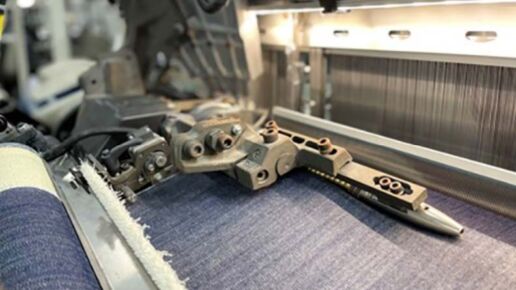
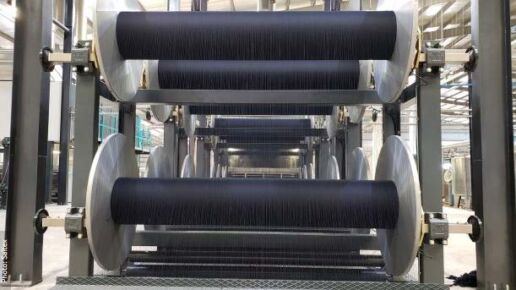
The new mill covers all operations from yarn spinning to weaving and to fabric dyeing and finishing. Saitex has announced it will produce 2 million meters of fabric per month, or 24 million yearly, and some 750 tonnes of yarn per month. These new operations have created 630 new jobs and the company says it will employ 1,000 at full capacity. As it has already done at its cut & sew factory, 20% of the jobs will be filled by people with disabilities.
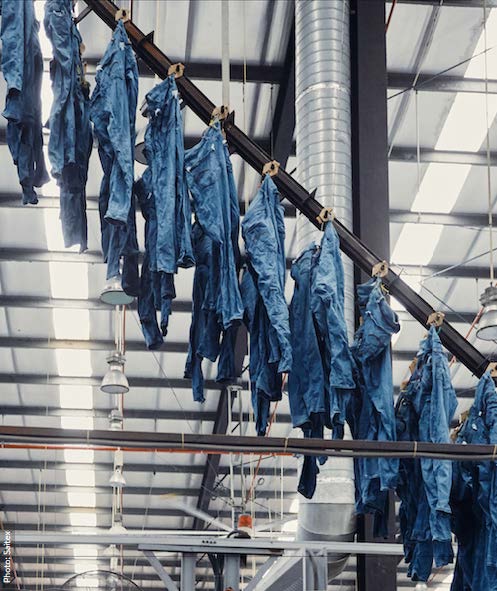
Like Saitex’s “Factory of the Future” in Los Angeles, CA, the new facility incorporates the latest and lowest impact technologies. The mill is equipped to produce yarns in pure cotton or in blends in dual-core, multiple-core and SiroSPUN technologies.
For indigo dyeing, Saitex has installed the Smart Indigo system that pre-reduces indigo via an electrochemical process. This, the company says, leads to lower CO2 emissions by 90%, requires 70% less energy and 30% less water, with oxygen as the only product released. Karl Mayer rope dyeing machines lead to further environmental savings, thanks to fewer dye bathes, and a 30% reduction in indigo and chemical usage.
Other eco-responsible features at the new site include LEED Gold Certified materials for the building, 15,000 solar panels, greywater recycling and rainwater collection systems. A vegetable garden covers 40% of the total site to feed workers and local communities. Saitex says it has also planted 6,000 trees in the industrial park, and has offset its carbon emissions by planting 50 hectares of mangroves in Vietnam, as part of its plan to contribute to climate neutrality by 2025.
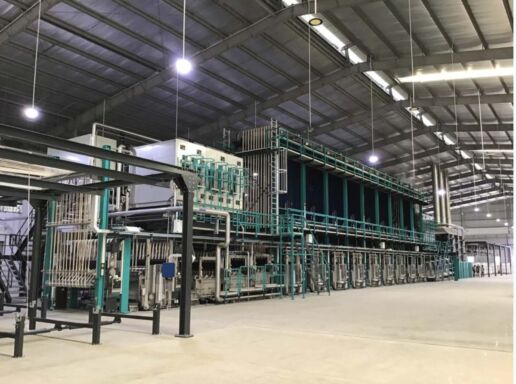

“It has been our long-term vision to close the loop on our operations. With the opening of the mill and the upcoming launch of our textile upcycling facility, Stelapop, our vision will be complete. We will close the circle, allowing us to provide unprecedented transparency in denim production and the ability to turn apparel and textile waste into high-quality goods. Our target is to become the most sustainable fabric mill on the planet making fully circular production possible for our customers.”
Sanjeev Bahl, CEO und Gründer von Saitex
This might be also interessting for you:
CLOUDWOOL – Sustainable Innovations
13. February 2024
In a time where natural wool is often imported and blended with synthetic fibers, Cloudwool relies on local resources and fights against the neglect of local sheep farmers' wool.
THE SOURCE 2024 – Spring.Summer 25 – Part II
8. February 2024
Some 30 selected clothing manufacturers present their products and services around the latest sourcing services and apparel manufacturing at THE SOURCE studio in hall 2.
SAAT MUNICH X BLUEZONE
6. February 2024
The "SIGNATURE Corporate Collection" from SAAT - a pinnacle of elegance and sophistication
CO2 Tex – Sustainable innovations
1. February 2024
CO2Tex stands out as a central project within BIOTEXFUTURE, focusing on CO2-containing thermoplastic polyurethane (TPU) as an alternative to conventional elastane.
THE SOURCE 2024 – Spring.Summer 25 – Part I
30. January 2024
Some 30 selected clothing manufacturers present their products and services around the latest sourcing services and apparel manufacturing at THE SOURCE studio in hall 2.
MUNICH FABRIC START Januar 2024 – Closing Report
26. January 2024
The essence of the meeting of the European fashion industry: we are experiencing a return to our roots to meet the growing need for orientation – supported by a variety of exciting sustainable and AI-supported solutions that can pave the way to the future for the industry.
Trend Preview for SPRING.SUMMER 25
22. January 2024
Reduction and realism, coupled with imagination and creativity, create a new awareness of quality, sustainability and design expertise.
KEYHOUSE 2024 trends spring.summer25
20. January 2024
Auf über 1.000 Quadrat-metern finden Sie richtungsweisende Smart Textiles, Future Fabrics und neue Technologien – sei es in Punkto Nachhaltigkeit, Kreislaufwirtschaft, Digitalisierung, Traceability, Technologie oder Finishing für die Saison Autumn.Winter 24/25.
TIMELY TIMELESS
18. January 2024
Langlebigkeit steht hoch im Kurs. Und damit ist nicht nur eine solidere Qualität gemeint, sondern auch und vor allem ein zeitloseres Design.
Digitale Klarheit im Design – ASSYST
16. January 2024
Für das Thema Nachhaltigkeit sind normalerweise Einkauf und Produktion zuständig. Wer aber über den Einsatz von abbaubaren Stoffen hinausdenkt, kann Kosten, Materialverbrauch und Profitabilität deutlich beeinflussen. Neu daran: Der Schlüssel dazu liegt in der Hand der Kreativen.


